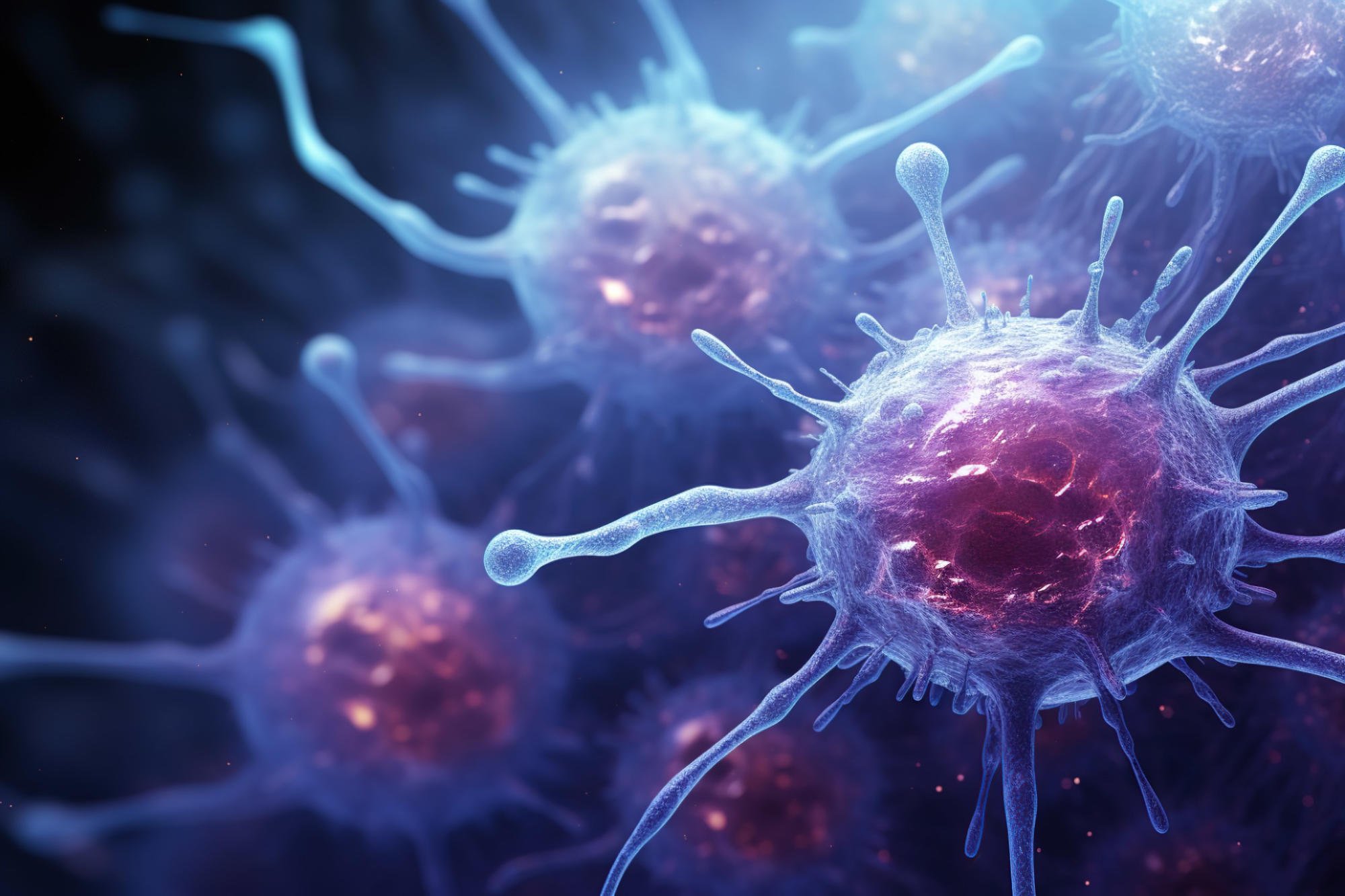博文
创新化合物利用新机制杀死癌细胞
||
创新化合物利用新机制杀死癌细胞
诸平
据德国波鸿鲁尔大学(Ruhr University Bochum, Germany)2024年8月18日提供的消息,创新化合物利用新机制杀死癌细胞(Innovative Compound Uses New Mechanism To Kill Cancer Cells)。
波鸿鲁尔大学的一个研究小组开发了一种化合物,可以通过铁死亡(ferroptosis)引发癌细胞死亡,有望成为新的癌症治疗方法,但需要进一步开发,仅针对癌细胞。
来自波鸿鲁尔大学的一个研究小组首次创造出一种物质,可以引发癌细胞中的铁死亡(ferroptosis),这是一种特定类型的细胞死亡。这一突破可能会导致新药的开发。相关研究结果于2024年8月13日已经在德国《应用化学国际版》(Angewandte Chemie International Edition)杂志网站在线发表——Nicolás Montesdeoca, Lukas Johannknecht, Elizaveta Efanova, Jacqueline Heinen-Weiler, Johannes Karges.Ferroptosis Inducing Co(III) Polypyridine Sulfasalazine Complex for Therapeutically Enhanced Anticancer Therapy. Angewandte Chemie International Edition, 2024 Aug 13: e202412585. DOI: 10.1002/anie.202412585. First published: 13 August 2024. https://doi.org/10.1002/anie.202412585
这项研究是由Johannes Karges博士的药物无机化学小组与博士生Nicolás Montesdeoca和两名本科生Lukas Johannknecht和Elizaveta Efanova合作完成的,并得到了波鸿鲁尔大学医学成像中心(Medical Imaging Center at Ruhr University Bochum)的Jacqueline Heinen-Weiler博士的支持。
两种程序性细胞死亡(Two types of programmed cell death)
在程序性细胞死亡中,某些信号分子启动了一种自杀程序,导致细胞以受控的方式死亡。例如,这是消除受损细胞或控制某些组织中细胞数量的必要步骤。
细胞凋亡(Apoptosis)一直被认为是程序性细胞死亡的一种机制。铁死亡是最近发现的另一种机制,与其他细胞死亡机制相反,其特点是脂质过氧化物(lipid peroxides)的积累。这个过程通常是由铁(Fe)催化的,在拉丁语中铁为ferrum,因此铁死亡(ferroptosis)就是由铁的拉丁文名字演变而来的。
Johannes Karges解释说:“为了寻找一种替代传统化疗药物作用机制的药物,我们特别寻找了一种能够引发铁死亡的物质。”Johannes Karges的团队合成了一种含钴的金属配合物(cobalt-containing metal complex),这种配合物在细胞的线粒体中积累,产生活性氧,更准确地说是氢氧自由基(hydroxide radicals)。这些自由基攻击多不饱和脂肪酸(polyunsaturated fatty acids),导致大量脂质过氧化物的形成,进而引发铁死亡。因此,该团队是第一个生产出专门用于触发铁死亡的钴配合物的团队。
人工微肿瘤的有效性证明(Effectiveness demonstrated on artificial microtumors)
波鸿鲁尔大学的研究人员利用多种癌细胞系证明,钴配合物可诱导肿瘤细胞中的铁死亡。最重要的是,这种物质减缓了人工制造的微肿瘤的生长。
正如Johannes Karges总结这项研究的那样,我们相信开发引发铁死亡的金属配合物是一种很有希望的癌症治疗新方法,他补充说:“然而,在我们的研究结果产生药物之前还有很长的路要走。”金属配合物必须首先在动物研究和临床试验中被证明是有效的。此外,该物质目前不会选择性地针对肿瘤细胞,但也会攻击健康细胞。这意味着研究人员必须首先找到一种方法来包裹钴配合物,使其只损害肿瘤细胞。
Johannes Karges获得了德国化学工业基金会(Fonds der Chemischen Industrie)的李比希奖学金(Liebig Scholarship)以及安内特基金会(Aventis Foundation)的生命科学桥奖(Life Sciences Bridge Award from the Aventis Foundation),还有2024年保罗·埃尔利希及路德维希·达姆施泰特早期职业奖(Paul Ehrlich & Ludwig Darmstaedter Early Career Award 2024)。
上述介绍,仅供参考。欲了解更多信息,敬请注意浏览原文或者相关报道。
Despite significant improvements in the treatment of cancerous tumors in the last decades, cancer remains one of the deadliest diseases worldwide. To overcome the shortcomings of currently applied chemotherapeutic treatments, much research efforts have been devoted towards the development of ferroptosis inducing anticancer agents. Ferroptosis is a newly described form of regulated, non-apoptotic cell death that is associated with high potential inside the clinics. Herein, the chemical synthesis and biological evaluation of a Co(III) polypyridine sulfasalazine as a ferroptosis inducer is reported. Upon entering the cancerous cells, the metal complex primarily accumulated in the mitochondria, triggering the production of hydroxy radicals and lipid peroxides, ultimately causing cell death by ferroptosis. The compound demonstrated to eradicate various monolayer cancer cells as well as colon carcinoma multicellular tumor spheroids. To the best of our knowledge this study reports on the first example of a Co(III) complex that is capable of inducing ferroptosis.
https://blog.sciencenet.cn/blog-212210-1447429.html
上一篇:阿尔茨海默氏症的真正原因可能不是淀粉样蛋白:突破性的发现挑战几十年的理论
下一篇:独特的植物物种为癌症提供了令人惊讶的新见解

